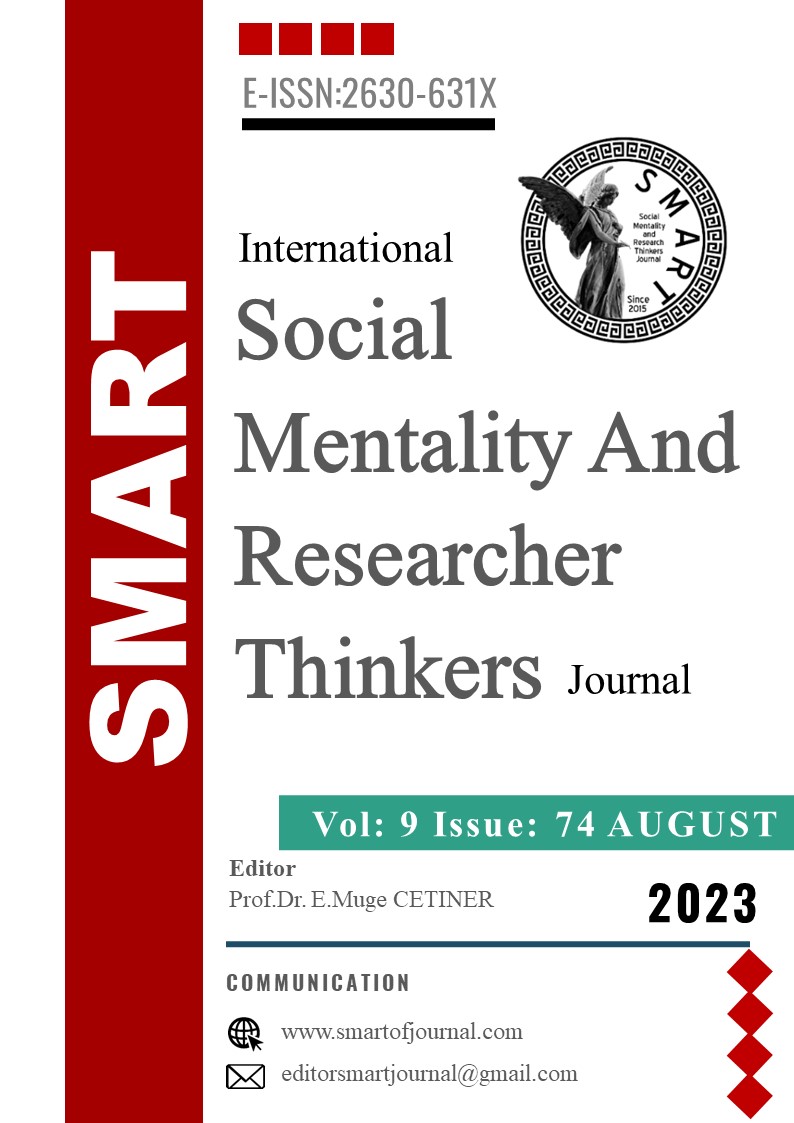Mecmûa-ı Eş’âr’da Muharrer Buhûrîzâde Mustafâ Itrî Besteleri ile Notası Günümüze Ulaşan Sâir Besteler
Author :
Abstract
Bu çalışmada, “T.Y. 5525” kütüphane numarası ile İstanbul Üniversitesi Nadir Eserler Kütüphanesi arşivinde yer alan fakat herhangi bir mürettib/müntensih adıyla kayıtlı olmayan, günümüzde ise bazı akademik çalışmalarda Buhûrîzâde Mustafâ Itrî tarafından “mecmûatü’r-resâîl” türünde bir mecmûa şeklinde tertîb edildiği delilleriyle birlikte sunulan “Mecmûa-ı Eş’âr” isimli yazma eserde tahrîr edilmiş Itrî bestelerinin tamamı ile sâir bestekârların, notası günümüze ulaşan besteleri sunulmuştur. XVII. asrın son çeyreği ile XVIII. asrın başlarında tertîb edilen 238 varaktan müteşekkil bu eser, XVI. ve XVII. asır şairlerinin şiirlerinden müteşekkil bir “Eş’âr Bölümü” ve XVII.asır mûsikîşinâslarının bestelerinden müteşekkil bir “Güfteler Bölümü”nü içermektedir. Bu yazma eser ayrıca XVII. asır müelliflerinden Kâtip Çelebi’nin Mîzânü’l-Hâk fî İhtiyâri’l-Ehakk isimli mensûr eseri ile XVI. ve XVII. asırları idrak etmiş şair/müellif Veysî’nin Vak’anâme-i Veysî (Hâb-nâme-i Veysî) isimli mensûr eseriyle birlikte, yine Veysî’ye ait manzûm Tevbe-nâme’sini de hâvîdir. Mecmûa-ı Eş’âr, akademik manada ilk kez Semire Oskay tarafından 1948’de İstanbul Üniversitesi bünyesinde hazırlanan Itrî ve Bestelediği Şiirler /Türkoloji Mezuniyet Tezi isimli tezle mürettibine dair herhangi bir bilgi verilmeksizin tanıtılmış ve bu tezde, mecmûada yer alan Itrî’ye ait bestelerin yalnızca bir kısmı günümüz Türkçesine aktarılarak derlenmiştir. Yaptığımız tetkikler neticesinde mezkûr tezde, hem mecmûanın varak numara tertîbinde hem de Itrî’ye ait eserlerin tasniflendirilmesinde yapılan bazı hatalarla karşılaşılmış ve bu hatalar giderilmiştir. Bu makale çalışması ile ayrıca Mecmûa-ı Eş’âr'ın iç tertîbi, muhtevası ve bölümleri kısaca ele alınmış, günümüz “klasik” Türk Mûsikîsi repertuvarının şekillenmesinde büyük rolü olan Itrî’nin ve günümüze notası ulaşan sâir bestekârların besteleri derlenerek XVII. asır mûsikî sahası ile alakalı çalışmalara katkı sağlanması amaçlanmıştır.
Keywords
Abstract
In this study, T.Y. The “Mecmûa-ı Eş’âr”, which is in the archive of the Rare Works Library of Istanbul University with the library number “T.Y. 5525”, but is not registered with any scribe / copyist name, is presented together with the evidences that it was copied as a “mixed journal” type of journal by Buhurizade Mustafa Itri in some academic studies today; all of the Itri compositions and, the compositions of other composers that have survived to the present day have also been compiled. Written in the last quarter of the 17th century and the beginning of the 18th century, this manuscript, consisting of 238 leaves, includes the "Poems Section" consisting of poems of 16th and 17th century poets and the "Lyrics Section" composed of 17th century musicians' compositions. This manuscript is also include the prose work of the 17th century author Kâtip Çelebi named Mîzânü’l-Hâk fî İhtiyâri’l-Ehakk; and It contains the poetic Tevbe-nâme of Veysî, a poet/author who has comprehended 16th and 17th centuries, together with his prose work named Vak’anâme-i Veysî (Hâb-nâme-i Veysî). Mecmûa-ı Eş’âr was introduced academically for the first time by Semire Oskay thesis that Itrî ve Bestelediği Şiirler /Türkoloji Mezuniyet Tezi, which was prepared within the body of Istanbul University in 1948. However, in this thesis, Only some of Itri's compositions have been compiled into with contemporary Turkish. As a result of our investigations, some mistakes were encountered in the aforementioned thesis, both in the leaf number arrangement of the journal and in the classification of the works of Itri and and these mistakes were corrected. In this article, the internal order, content and sections of Mecmûa-ı Eş’âr were briefly discussed, and the compositions of Itri, who played a major role in shaping today's “classical” Turkish Music repertoire, and other compositions whose notes have survived to the present day and, it is aimed to contribute to the studies related to the 17th century music field.





